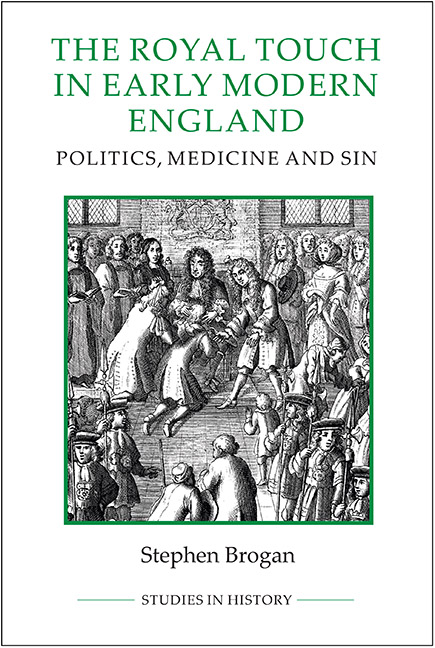Book contents
- Frontmatter
- Contents
- List of Illustrations
- List of Tables
- Dedication
- Acknowledgements
- Abbreviations
- Introduction
- 1 The origins and medieval history of the royal touch, 1000–1485
- 2 The Tudors: revival and reform of royal therapeutics, 1485–1603
- 3 The royal touch and the Stuart monarchy, 1603–1688
- 4 The ritual process of the royal touch, 1660–1688
- 5 The Restoration debate: the rise of ambivalence and scepticism, 1660–1688
- 6 The royal touch and the early English Enlightenment, 1689–1750
- Conclusion
- Bibliography
- Index
1 - The origins and medieval history of the royal touch, 1000–1485
Published online by Cambridge University Press: 17 June 2021
- Frontmatter
- Contents
- List of Illustrations
- List of Tables
- Dedication
- Acknowledgements
- Abbreviations
- Introduction
- 1 The origins and medieval history of the royal touch, 1000–1485
- 2 The Tudors: revival and reform of royal therapeutics, 1485–1603
- 3 The royal touch and the Stuart monarchy, 1603–1688
- 4 The ritual process of the royal touch, 1660–1688
- 5 The Restoration debate: the rise of ambivalence and scepticism, 1660–1688
- 6 The royal touch and the early English Enlightenment, 1689–1750
- Conclusion
- Bibliography
- Index
Summary
The royal touch originated in France during the eleventh century and was practised intermittently until it became a regal prerogative in the thirteenth century. In England the origins are less certain, but by the thirteenth century the ceremony had been assimilated into English royal custom by the Plantagenet kings. Touching for scrofula was the key aspect of sacral monarchy, whereby the sovereign was anointed and performed religious duties. This chapter therefore argues that although the royal touch could enhance the political authority of the English and French crowns, it was a key component of the religious aspects of both monarchies during the Middle Ages. The religious duties of both crowns were of great importance to the theory and practice of kingship, and were closely interwoven with civil power. During the thirteenth century these religious observations were increased in number and performed more often due to the piety of Louis ix and his English counterpart Henry iii. Some of these duties, such as alms-giving, were already established but others, such as the royal touch, were new or revived. Beyond this, a number of the dominant Christian values of medieval Europe provide further insight into the rationale and context of the royal touch, while the close relationship between England and France helps to explain why the English monarchs imitated their French kinsmen. It is worth noting, though, that the evidence concerning the origins and early history of the royal touch in both countries is fragmentary, meaning that sometimes questions can only be answered with speculation or left open.
This chapter will first consider the context of the royal touch, namely sacral monarchy and alms-giving, before turning to an analysis of its origins in France, and its early history in England. From Edward ii to Mary Tudor English monarchs also performed a second thaumaturgic duty, the blessing and distributing of cramp rings – finger rings that were worn to ward off epileptic seizures – and so this practice too will be analysed.
Sacral monarchy and alms-giving
Kings needed to set themselves apart from the nobility, and, from the conversion of Constantine onwards, the Christian Church provided justification and sanction for temporal rulers. They were said to rule ‘by the grace of God’, meaning that they were chosen as God's representatives on earth.
- Type
- Chapter
- Information
- The Royal Touch in Early Modern EnglandPolitics, Medicine and Sin, pp. 23 - 44Publisher: Boydell & BrewerPrint publication year: 2015



